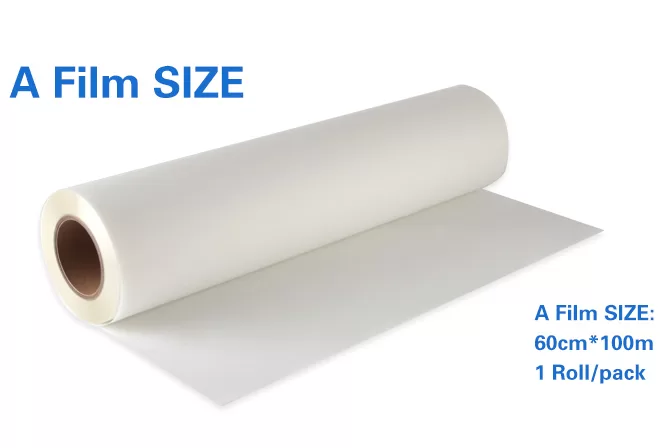Both UV DTF film rolls and film formats have their own advantages and disadvantages, depending on the specific requirements and preferences of the printing application. Here are some pros and cons of each format:

UV DTF film:
advantage:
1. Continuous printing: UV DTF film can be printed continuously without frequent reinstallation or replacement. This is beneficial for large-scale or long-term printing as it reduces downtime and increases productivity.
2. Custom lengths: Film rolls offer flexibility in the length of film used in each print job. Users can cut the film to desired lengths based on design or substrate size to reduce waste and optimize material usage.
3. Cost-Effectiveness: Film rolls often offer cost savings compared to paper formats, especially for large-scale printing applications. Buying rolls in bulk can reduce the unit cost per square meter or per foot of film.
4. Storage efficiency: Film rolls take up less storage space than sheets because they can be stacked vertically or stored on roll holders or shelves. Especially beneficial when storage space is limited or when storing various types of film.
shortcoming:
1. Potential waste: If a printing operation requires different lengths of film, some waste may be generated to meet specific operation requirements. This can result in a higher percentage of unused or leftover film.
2. Handling challenges: Handling film rolls and loading them onto the printer can be more challenging, especially with larger and heavier rolls. Proper equipment and handling techniques are essential for a smooth and safe operation.
UV DTF sheet:
advantage:
1. Accurate size control: The paper can accurately control the size and dimension of each printing operation. This is especially beneficial for projects requiring a specific substrate size or using smaller designs that don't require the full width or length of curling.
2. Reduced waste: The film format can minimize waste because the film has already been cut to the required size and does not require additional repair or cutting. This can be cost-effective, especially for smaller print applications or with expensive or limited film types.
3. Ease of handling: Papers are usually easier to handle and load onto printers because they are usually lighter and easier to manage. This saves time and effort during the printing process.
shortcoming:
1. Reloading between operations: Paper formats need to be reloaded or replaced between printing operations, which can cause additional downtime and interruption of the printing process. For high-volume or continuous printing applications, this may be less efficient.
2. Storage space: Compared to film rolls, storing the plate format is less space efficient because the plates need to lie flat to prevent bending or damage. This may require more shelf or drawer space, especially when dealing with various paper sizes or types.
Ultimately, the choice of UV DTF film and paper format depends on print volume, specific operating requirements, cost considerations, available storage space, handling and reloading required convenience.
